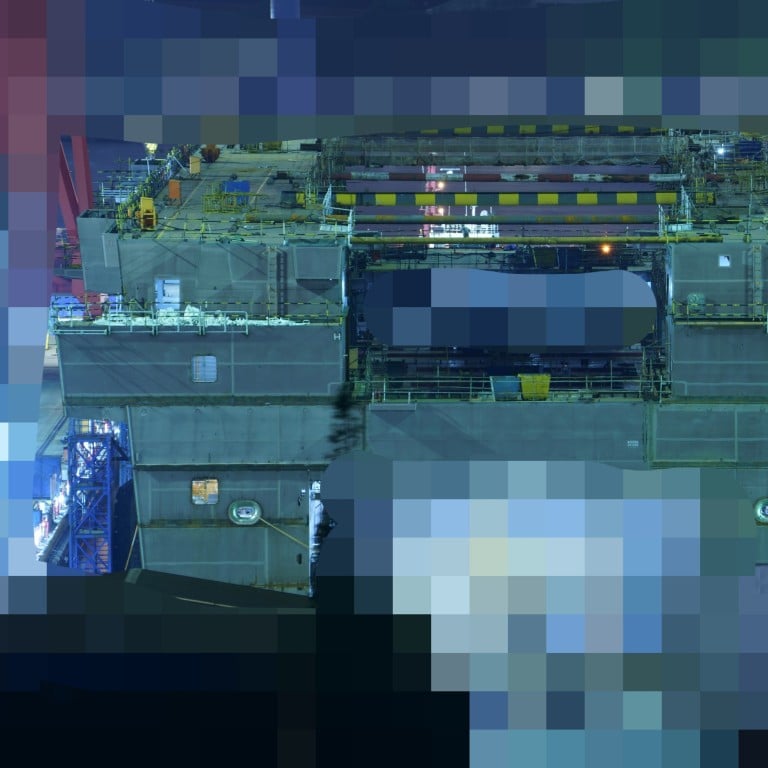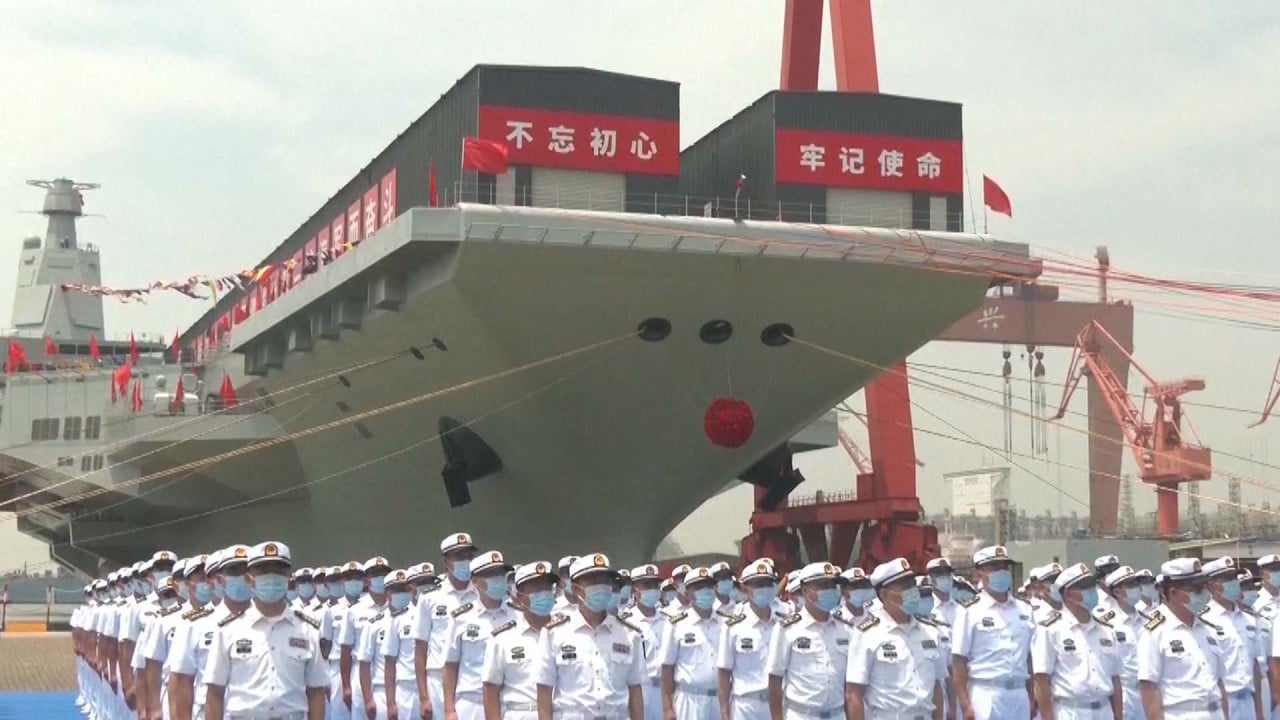
Will Type 075 assault ship upgrade advance PLA’s capacity to attack Taiwan?
- Images showing the latest amphibious helicopter platform nearing completion reveal it may include integrated electric propulsion
- Experts said the development is sooner than expected and is likely to include the same system used by the Fujian aircraft carrier
The latest imagery uploaded to social media in China and overseas on August 31 showed the hull assembly of a Type 075 LHD nearing completion at Hudong-Zhonghua shipyard, a Shanghai-based subsidiary of China State Shipbuilding Corporation (CSSC).
According to images of the fourth Type 075 circulating on social media platforms, the main deck of the ship remains hollow, despite the advanced stage of construction.
This is a departure from the building process used in the previous three Type 075 amphibious helicopter assault ships, also built by the Hudong-Zhonghua shipyard. The Hainan, Guangxi and Anhui entered service from 2019 through to last year.
Lu Li-shih, a former instructor at the Taiwanese naval academy in Kaohsiung, said the hollow deck hinted that the new platform is waiting for the installation of some specific but important equipment.
“There are some shed frames and rails rigging out around the big hole on the deck for safety construction needs. The working process is very different when compared with the construction of the previous three ships,” Li said.
Is China’s Type 075 assault ship a mini aircraft carrier in disguise?
“One of the most important [pieces of] equipment the new Type 075 ship is waiting for is likely to be the integrated electric propulsion (IEP) system,” he said, adding that it would be similar to the Fujian aircraft carrier’s, powering electromagnetic catapults and arresting gear.
Macau-based military observer Antony Wong Tong agreed, pointing out that some of the original Type 075 design was “not mature enough” to deal with a potential Taiwan contingency.
The IEP installation may occur sooner than expected, with two independent sources close to the Chinese military saying that the vessel will be the last Type 075, with the next model expected to include an electromagnetic aircraft catapult and arresting gear.
Both sources, who asked not to be identified because of the issue’s sensitivity, separately confirmed that the IEP used by the Fujian has yet to be installed on an amphibious assault ship.
“This is the last Type 075 as the PLA just planned to have four such warships,” one of the sources said.
The other source said the next iteration, the Type 076, is expected to be a “drone carrier”, with electromagnetic aircraft catapult and an arresting gear system for fixed-wing unmanned combat aerial vehicles.
“When construction of the Type 076 amphibious landing docks starts will depend on sea trial results of the Fujian carrier,” the source said, adding that some new technologies designed for the next generation vessel may be tested on the last Type 075.
The Type 075 is slightly smaller than the US Navy’s Tarawa and Wasp-class amphibious assault ships, with a displacement of nearly 40,000 tonnes. It was a significant upgrade on its predecessor, the 25,000-tonne Type 071.
It is widely believed that the Type 075 would have a significant role in any military attack on Taiwan, which Beijing has vowed to bring under mainland control, by force if necessary.
Most countries, including the US, do not recognise Taiwan as an independent country, but Washington and others are opposed to any unilateral change to the status quo.


